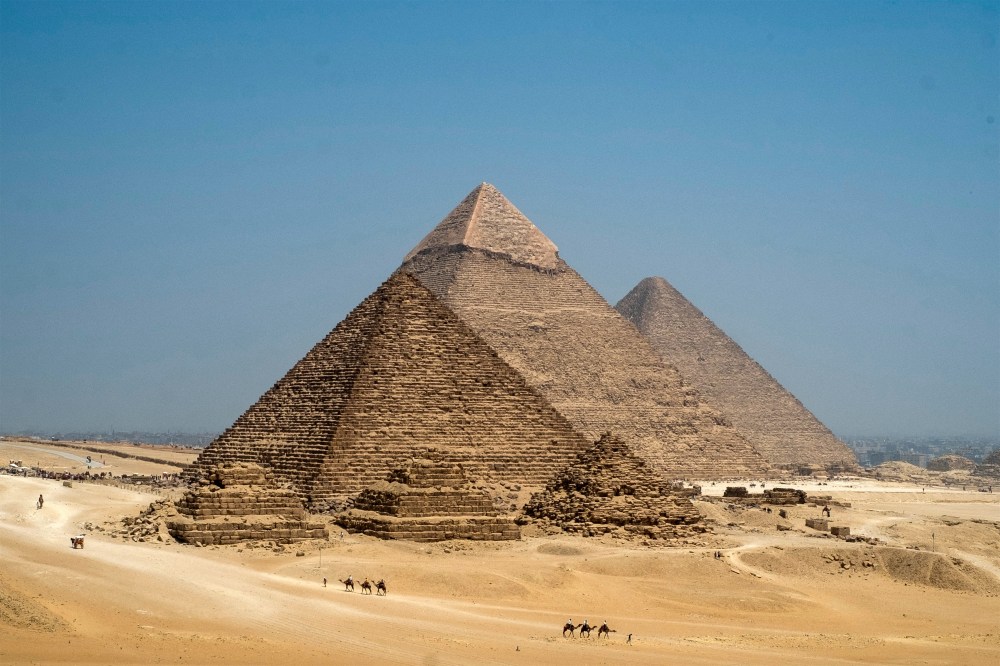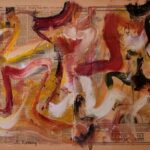A team of researchers from Egypt’s National Research Institute of Astronomy and Geophysics and Japan’s Higashi Nippon International University and Tohoku University have discovered an unusual L-shaped structure between roughly one and a half and six and a half feet below the surface of the Western Cemetery, adjacent to the Great Pyramid of Khufu in Giza. According to the team’s report, published May 5 in Archaeological Prospection, the structure measures roughly thirty-three by forty-nine feet and is filled with sand, which the archaeologists believe mean it was backfilled following construction. Connected to and below this structure, at a depth of between about sixteen and thirty-three feet, is “a highly electrically resistive anomaly” of about thirty-three by thirty-three feet, whose properties they were unable to ascertain. The researchers noted that “electrically resistive material in a sand dune can be a mixture of sand and gravel, including sparse spacing or air voids within it.”
References: this article is based on content originally published by News Desk on Artforum. You can read the full article here.
The Western Cemetery, like the abutting pyramid, was built 4,500 years ago and is home to the tombs of King Khufu’s family members, as well of those of high-ranking officials. Called mastabas—the Arabic mastaba translates to “bench” in English—these tombs are low, flat-topped mud-brick structures with inward sloping sides, with burial shafts below. The area the archaeologists focused on is devoid of such tombs, presenting as an uninterrupted expanse of sand, and has to date not been exhaustively excavated. Beginning in 2021, the team used ground-penetrating radar (GPR) and electrical resistivity tomography (ERT) to map the shape of the anomaly without digging up the cemetery.
References: this article is based on content originally published by News Desk on Artforum. You can read the full article here.
Given the placement of the anomalies and their discerned characteristics, the team hypothesized that the upper structure “could be vertical walls of limestone or shafts” leading to the lower structure, which the archaeologists suggest could be a tomb, though they acknowledge that “a more detailed survey would be required in order to confirm this possibility.”
References: this article is based on content originally published by News Desk on Artforum. You can read the full article here.






